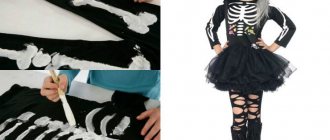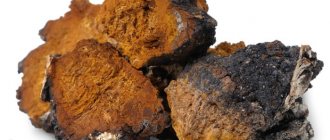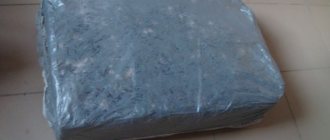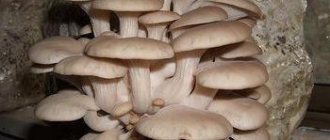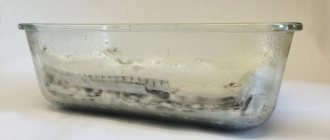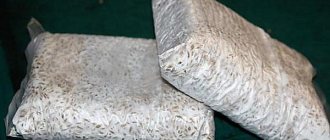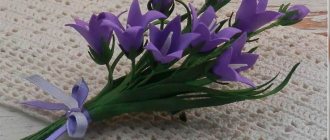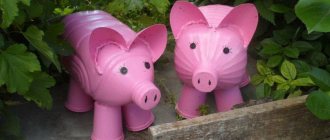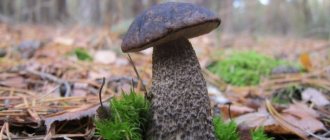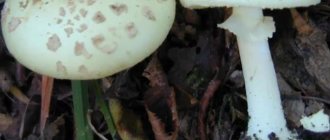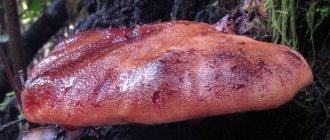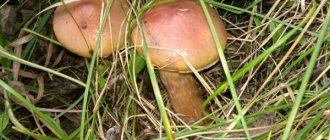Chaga is a sterile (sterile) form of the birch fungus, which has the scientific name Inonotus obliques.
Its health benefits are beyond doubt in either traditional or folk medicine. Crafts made from chaga are not only a pleasant pastime, but at the same time the pleasure of working with warm natural material. As well as high-class environmental products, beautiful crafts for kindergarten or school, unusual decorations for your home or garden.
To process durable chaga, you will need a hammer, chisel, sandpaper and other carpentry tools. To give the finished product a rich color and shine, acrylic paints and varnish are usually used.
Important! Children can make crafts from mushrooms only under the supervision of adults, since a child can get injured and cut when using tools.
Crafts from chaga mushroom
Wood mushroom for crafts
Wood mushrooms are an excellent material for making a wide variety of crafts. They can be found on tree trunks and stumps in forests and copses.
The mushrooms are easily separated from the trees, and the cut area is carefully leveled with a knife. To connect parts of wood fungus, indentations are made in them with a knife or awl, which are filled with plasticine or glue, and then pointed twigs or matches are inserted into them.
Dried mushrooms are more difficult to process, but the compounds are then much stronger.
Tree mushrooms come in different shapes, colors and physical properties. There are mushrooms that are strong, hard, and beautifully colored. Such mushrooms usually grow on coniferous trees and oak. Soft, gray, unattractive mushrooms grow on aspen and birch trees, often damaged by the larvae of some types of beetles. All types of wood mushrooms lend themselves well to cutting with a knife, drilling with an awl and a drill. When they dry, they are easy to glue with any glue. When raw, they do not stick together firmly and the craft may fall apart.
The tinder fungus is a parasite that grows on the trunks of deciduous and coniferous trees. Its development begins on a living tree, then continues on a dead one. Every year, in layers, the fungus increases in size and, absorbing the sap of the tree, causes the tree to rot, weakens its growth and ultimately leads to death.
Mushrooms make excellent coasters for crafts. You can also make whole figures from them, for example a spider or a turtle, a young lady, etc. Sometimes on aspen trees there are mushrooms that have an almost complete shape of funny monkey heads, the heads of fancy animals, you can walk through the forest and pick them out. Or from some aspen tree the head of a mighty bull will stare at you, standing. just attach him horns from pine cones and ears from pieces of birch bark.
Covered with clear varnish, tree mushrooms acquire a bright color and look great.
Bearing in mind that some types of tree fungi are affected by pests that, penetrating inside the fungus, eat away at its core and destroy the entire fungus, mushrooms growing on birch trees must be checked very carefully. If you notice that there are small round holes on the surface of the mushroom, as if someone had pierced them with an awl, then the parasites are already in the mushroom. It is better to throw away such a mushroom, or, as a last resort, you can cover it entirely with nitro varnish, making sure that as much of the varnish as possible gets into the holes. In just a few minutes, the pests (bugs or their larvae) will die and the mushroom will be preserved and will keep well. But if the varnish does not penetrate the mushroom and does not kill the pests inside the mushroom, then after a few weeks the craft made from such a mushroom will be destroyed.
Birch tree mushrooms are very fragile, so you need to make as few holes in them as possible and be careful so that they do not fall apart.
In the forest, on stumps and on the trunks of fallen rotting trees of various species, you can find large families of thin lamellar tree mushrooms, brightly colored with brown, gray, white, bluish and pink stripes. Such mushrooms, carefully collected and dried, make excellent material for making skirts for ballerinas, hats for musketeers and puss in boots. These mushrooms can be easily processed with a knife, drilled with an awl and glued together with any glue.
A special conversation is about the funnel-shaped mushroom. It is valuable for its shape and ease of processing. This is an almost finished skirt for a little girl, a hat for a musketeer. This is not a tree mushroom. It grows on sandy soil in pine forests, has a brownish-yellow, sometimes grayish color, and is shaped like a funnel or two or three funnels inserted into one another. Even when raw, it feels dense and leathery to the touch. When drying, the mushroom does not lose this quality; it does not lose color or shape, it only dries out slightly. It cuts perfectly with a knife and glues with any glue.
Mushroom young lady
You will need: tree mushrooms, twigs, cardboard. PVA glue, gouache, varnish. Knife, sandpaper, awl.
Stages of making crafts:
1. Cut off any rough edges and sand the bottom of the wood fungus with sandpaper.
www.hnh.ru
Crafts from chaga mushroom (photo)
Chaga mushrooms are an excellent material for making a variety of crafts.
The mushrooms are easily separated from the trees, and the cut area is carefully leveled with a knife. To connect parts of wood fungus, indentations are made in them with a knife or awl, which are filled with plasticine or glue, and then pointed twigs or matches are inserted into them. Dried mushrooms are more difficult to process, but the compounds are then much stronger.
Autumn craft from chaga mushroom. Master class with step-by-step photos. To make a craft from a mushroom, you will need: - a mushroom, - a small semicircular chisel, - a hammer, - a pencil, - paints (acrylic), - sandpaper,
- wood varnish.
1. First of all, the mushroom must be thoroughly sanded on all sides:
2. Draw a drawing with a pencil.
3. Then, using a chisel and a hammer, remove part of the mushroom near the butterfly (we make the drawing protrude above the general background) to a depth of 5-7 millimeters:
4. Apply paint:
5. We coat our chaga mushroom craft with varnish on all sides:
This chaga mushroom craft can be placed on a shelf or hung on the wall (by making a small wire loop on the back of the mushroom).
www.colors.life
Brownie made from chaga mushroom and fur - a craft for the garden
I didn’t know what to call this cute creature - a woodsman, a goblin, a penguin or a swamp kikimora. As a result, she called it a brownie, created by someone with her own hands from a chaga mushroom, as well as fur.
A nice original craft of a fairly large size, which is perhaps best suited for a summer cottage. We'll talk about how you can do it yourself.
Today’s post will be very short, since there is nothing special to tell here, everything can be seen in the pictures.
I met such a handsome brownie in Norway in a small village where they sell books. This tiny settlement is, in fact, famous for the sale of various kinds of literature. The place is called the book village.
That's how picturesque it looks. There are mountains around, and the houses are located along the shore of the lake.
People come here specifically for books. They are mostly in Norwegian and English, but you can find (if you dig around) also in other languages. The topics are very diverse.
I deliberately did not rummage through the racks; I had taken a small suitcase with me; nothing else would have fit in it anyway, and I didn’t need the extra weight (“waste paper” weighs a lot).
As you can see in the photo, trade goes on not only in almost all the surrounding houses, but even on the street!
How to make a brownie with your own hands
For the base on which we will glue the fur, you can use anything. I think a slightly processed piece of log will do just fine - the brownie will be very stable on its feet.
It is advisable to make a leg at the bottom of the brownie, like a glass, to give the impression that the brownie has legs.
There is no need to treat yourself thoroughly; fur will cover everything later anyway. Fur can be either artificial or natural (from old unnecessary things). Here it does not have to be first grade and of excellent quality!
The hairstyle just covers the not very beautiful place where the chaga is attached to the tree. A very quiet brownie, it protects peace in the house. Just a little sad for some reason...
The head and nose of the brownie is a common chaga mushroom, some call it birch mushroom. It grows on old dead trees, or rather, on trunks. Everyone knows him well. It is used as a medicine in the treatment of certain diseases, but we are not talking about that now.
The eyes are painted, simple acrylic paint will do just fine. Although you can use wooden buttons, beads, pieces of leather - whatever your imagination can do!
This character stands quietly in a corner right next to the front door - guarding, no one
Medicinal properties of birch polypore
Traditional medicine has been using the mushroom for decades. In small dosages, birch tinder fungus brings benefits to the body, namely:
- helps with chronic constipation due to its laxative effect;
- cleanses the body of toxins and improves liver function;
- strengthens the immune system and prevents colds;
- relieves pain and inflammation in joint ailments;
- accelerates skin healing and disinfects tissue from cuts, wounds and ulcers;
- improves mood and has a tonic effect;
- serves as a prevention of cancer and stimulates the body to resist malignant tumors;
- has a mild analgesic effect;
- soothes irritation of the mucous membranes of the stomach and intestines;
- improves the functioning of the kidneys and reproductive system.
Birch tinder fungus reduces appetite. This makes it useful for dieting and promotes weight loss.
Birch polypore has a diuretic effect and eliminates swelling
step-by-step master class on creating original products Crafts from chaga figures for an exhibition
Wood mushrooms are an excellent material for making a wide variety of crafts. They can be found on tree trunks and stumps in forests and copses.
The mushrooms are easily separated from the trees, and the cut area is carefully leveled with a knife. To connect parts of wood fungus, indentations are made in them with a knife or awl, which are filled with plasticine or glue, and then pointed twigs or matches are inserted into them.
Dried mushrooms are more difficult to process, but the compounds are then much stronger.
Tree mushrooms come in different shapes, colors and physical properties. There are mushrooms that are strong, hard, and beautifully colored. Such mushrooms usually grow on coniferous trees and oak. Soft, gray, unattractive mushrooms grow on aspen and birch trees, often damaged by the larvae of some types of beetles. All types of wood mushrooms lend themselves well to cutting with a knife, drilling with an awl and a drill. When they dry, they are easy to glue with any glue. When raw, they do not stick together firmly and the craft may fall apart.
Mushrooms make excellent coasters for crafts. You can also make whole figures from them, for example a spider or a turtle, a young lady, etc. Sometimes on aspen trees there are mushrooms that have an almost complete shape of funny monkey heads, the heads of fancy animals, you can walk through the forest and pick them out. Or from some aspen tree the head of a mighty bull will stare at you, standing. just attach him horns from pine cones and ears from pieces of birch bark.
Covered with clear varnish, tree mushrooms acquire a bright color and look great.
Birch tree mushrooms are very fragile, so you need to make as few holes in them as possible and be careful so that they do not fall apart.
In the forest, on stumps and on the trunks of fallen rotting trees of various species, you can find large families of thin lamellar tree mushrooms, brightly colored with brown, gray, white, bluish and pink stripes. Such mushrooms, carefully collected and dried, make excellent material for making skirts for ballerinas, hats for musketeers and puss in boots. These mushrooms can be easily processed with a knife, drilled with an awl and glued together with any glue.
A special conversation is about the funnel-shaped mushroom. It is valuable for its shape and ease of processing. This is an almost finished skirt for a little girl, a hat for a musketeer. This is not a tree mushroom. It grows on sandy soil in pine forests, has a brownish-yellow, sometimes grayish color, and is shaped like a funnel or two or three funnels inserted into one another. Even when raw, it feels dense and leathery to the touch. When drying, the mushroom does not lose this quality; it does not lose color or shape, it only dries out slightly. It cuts perfectly with a knife and glues with any glue.
Mushroom young lady
You will need: tree mushrooms, twigs, cardboard. PVA glue, gouache, varnish. Knife, sandpaper, awl.
Stages of making crafts:
1. Cut off any rough edges and sand the bottom of the wood fungus with sandpaper.
2. Make indentations with an awl at the joints of the parts. Fill them with glue and assemble the craft using twigs.
3. Draw the doll’s face with gouache and coat the craft with varnish.
4. Attach the product to a cardboard stand.
Mushroom Spider
Materials and tools
: tree mushrooms, twigs, strings. PVA glue, varnish. Knife, awl, sandpaper.
Manufacturing.
1. Peel the undersides of the mushrooms for the head and breast. Spider belly and for stand.
2.Make indentations with an awl at the joints of the parts, drop glue into the indentations and assemble the craft using twigs or matches.
3.In a stand (a large tree mushroom), strengthen the twig and tie the threads in the form of a web
The use of larch sponge in folk medicine
There are many different recipes for preparing decoctions and infusions based on larch sponge. Let's look at the most popular of them.
Agaricus infusion, which has a laxative effect
Cut the mushroom into small pieces with a knife. Place one teaspoon of raw material in a ceramic or glass container, add just boiled water (250 ml). Place the mixture in a warm place for 8-10 hours (you can prepare it in a thermos). After straining, drink the product warm, 1/3 cup per day with meals.
A quick infusion based on larch sponge, which has a calming effect
Grate the mushroom. 1 tsp Pour the resulting substance with boiling water (1/3 cup), leave the mixture for 4 hours. After filtering, take it one tablespoon during meals.
A decoction used to treat liver diseases, tuberculosis
Pour chopped mushroom (1 tbsp) with water (475 ml), bring to a boil and cook for another 0.5 hour. Leave the mixture in the container with the lid tightly closed for another four hours. After straining the product, use it 3-4 times a day, 1 tbsp.
Agaricus-based infusion taken for weight loss
Agaricus (30 g) pour warm water (350 g), leave the composition for 8 hours. Pour the liquid into another container (do not pour it out!), Cut the raw materials into small pieces. Pour the existing infusion over the mushroom a second time, adding more warm water (50 ml). Bring the product to a temperature of 55°, pour into a thermos, leave there for twelve hours. The prepared solution should be consumed within one day, divided into equal doses twenty minutes before meals.
Tincture used to remove Giardia
Pour crushed mushrooms (one glass) with vodka (500 ml), leave for 14 days in a cool place, shaking the bottle periodically. After straining, drink the tincture 0.5 hours before meals three times a day.
Do-it-yourself chaga infusion and treatment of plants with it - my reviews | With your own hands
AN EXCELLENT TOOL FOR CRAFTERS AND HANDCRAFTS AND EVERYTHING FOR THE GARDEN, HOME AND Cottage LITERALLY FOR FREE + THERE ARE REVIEWS.
In one of the old issues of Homestead, I read that an infusion of the tinder fungus helps well against late blight. But before insisting, you need to grind it on a grater. This turned out to be a very labor-intensive task, and I decided to try another plant material - the birch chaga mushroom. It is known to have antimicrobial and antiseptic properties.
But will chaga cope with diseases of tomatoes, potatoes and cucumbers?
People drink chaga as an immunostimulant: it contains organic acids - oxalic, formic, acetic, tannins and polysaccharides. It also contains trace elements: copper, aluminum, zinc, silver, cobalt, barium, magnesium, sodium, nickel, calcium and manganese. So it is quite possible that chaga will act on plants as a growth stimulator.
I took five 50-gram bags of chaga, poured in 5 liters of hot (not boiling water) water and left for two days at room temperature. Then I strained the infusion and diluted it with water to the volume of a 10-liter bucket. The cake was poured onto the bed with tomatoes.
I sprayed tomatoes, cucumbers and peppers with this solution, making sure that the solution got to the bottom of the leaf.
I sprayed greenhouse crops twice during the season: the first - in the second half of May, before the tomatoes bloomed. We plant them in the greenhouse very early, in mid-April, and by this time they begin to bloom. At the end of June - beginning of July I repeated the procedure. By this time, the tomatoes have grown, new leaves have appeared, which also need to be treated against late blight.
I SPRAY THE PLANTS in cloudy weather, in the morning, so that the leaves are not wet in the evening. If the solution gets on the fruits, nothing bad will happen to them; chaga is not poison.
In the fall, I scatter dormant chaga on the beds of greenhouses and embed it in the soil. We drink it as tea in the spring to boost our immunity after winter.
In addition to spraying tomatoes and other greenhouse plants, on the same day I water them at the roots with chaga infusion, and my daughter also waters indoor flowers (in spring) and seedlings (once) with chaga infusion.
.
Tests of chaga infusion were carried out for 3 years on greenhouse crops. And finally we have forgotten what late blight on tomatoes is! This is despite the fact that the greenhouse door opens onto the planting of potatoes, which are sometimes caught by this scourge. But tomatoes don’t get sick!
Contraindications and possible harm
The beneficial properties and contraindications of the birch tinder fungus depend on the characteristics of the body. It is not recommended to use products based on the product:
- for individual allergies;
- during pregnancy and breastfeeding;
- for severe kidney and liver diseases;
- during exacerbation of pancreatitis and gastric ulcers;
- in children up to 12 years of age.
When using fruiting bodies for medicinal purposes, safe dosages must be observed. If the recommended volumes are exceeded, side effects may develop - nausea, vomiting, abdominal pain and skin rashes.
Wood crafts - photos of wooden castles from saw cuts and chaga
The photos of all the castles in this article were taken by me at the carillon festival in our city, just inside the enclosed space of the castle walls there was an exhibition and sale of handicrafts.
Not one, but even several masters sold their crafts for children and adults from different types of wood, as well as from chaga, growths on wood, two had such wooden castles, and one apparently specialized in this, he sold only medieval knightly castles made of wood .
And he not only sold them, but also made them in front of the public.
Original wood crafts
Germany is a country of castles, there are a great many of them scattered across the hills and mountains, some are dilapidated, others have been restored and are in good condition and in personal possession. The most famous are probably Ludwig's castles, in particular Schwanstein.
Our town is also famous for one very large, majestic and even, I would say, cumbersome - this is Johannesburg Castle, which stands towering above the banks of the Main. Perhaps I’ll show his photo later too. True, it is not as old as these wooden castles - it was built in the Renaissance, but still.
I immediately really liked the original idea of making such crafts from a natural material - wood. I thought - and it’s true, everything ingenious is simple! But not everything simple is brilliant. Unfortunately. How did anyone come up with this?
Wooden castles made from chaga and growths on wood
I took this photo at the first stand, where a variety of crafts were presented, all made from wood. It looks more like chaga or a growth on a tree.
It seems so simple, such a simple idea, but how well thought out! It really is like a real old castle, covered with snow, standing on a hill, only made of wood. Minimum additions and maximum effect.
I blurred the background a little so that the castle itself could be seen better. I would like to see a couple more bare winter trees there. And a bird on the roof - a crow.
